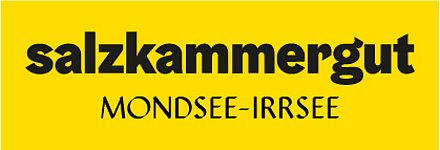Lake Mondsee
A protected area of European significance
We are often asked in the information office of the tourism association why Lake Mondsee is designated as a European nature reserve. We are happy to answer this question in our new magazine article.
With Austria's accession to the European Union, our country has committed itself to placing rare habitats and endangered animal and plant species under special protection.
In addition to national nature conservation laws, the European Directive "on the conservation of natural habitats and of wild fauna and flora" is responsible for the European Protected Area Attersee-Mondsee.
This directive lists habitats worthy of protection and endangered animal and plant species whose "favourable conservation" is of European interest.
The inflows and outflows of Lake Mondsee include parts of the Fuschler, Zeller and Wangauer Ache and the Seeache. These rivers form a special habitat network, the conservation of which is also the purpose of the European nature reserve. In addition to rare plants, endangered animal species such as the crayfish, kingfisher or otter are found in our rivers. Furthermore, these river sections are also the spawning grounds of two exceptional fish species - the pearl fish and the sea dove.
Pearlfish
Fuschler Ache
Sea dove
Current conservation status of the Mondsee European Protected Area
In principle, by designating the protected area, Austria has committed itself to establishing a "favourable conservation status" of both the habitats and the fish species. To this end, a regular report is to be prepared and submitted to the European Union.
According to the latest report from 2019, the two habitats have an inadequate conservation status with an unknown trend towards improvement, the two fish species also have an inadequate conservation status, but with the small ray of hope that the trend has improved in recent years.
According to protected area manager DI Michael Schauer from www.blattfisch.at, a noticeable improvement in fish stocks has been observed in recent years and these observations should also be reflected in the next report to the EU.
Conservation purpose and measures to improve the conservation status
Officials have initiated several renaturation projects in recent years, especially in the tributaries.
One example is the renaturation of the Zeller Ache in the direction of Helenental. Fish ladders in the Seeache and in the Fuschler Ache also contribute to the many jigsaw pieces of the improvements.
Some lakeshore owners have decided to remove hard bank obstructions with appropriate subsidies and thus create additional spawning grounds for the two fish species..
Agricultural enterprises have joined forces and jointly purchased equipment for spreading liquid manure close to the ground in order to reduce the nutrient input into the water bodies.
Büro Blattfisch is happy to accompany interested persons in this process - and there are also subsidies from the Province of Upper Austria and the European Union.
Office leaf fish
You and I - what can we do to preserve or even improve the condition of our Mondsee?
The most important thing is to realise that we have a protected area of European significance right on our doorstep. It seems logical that we do not pollute our lake and its tributaries and refrain from interfering with the lake bed and the spawning of fish species.


